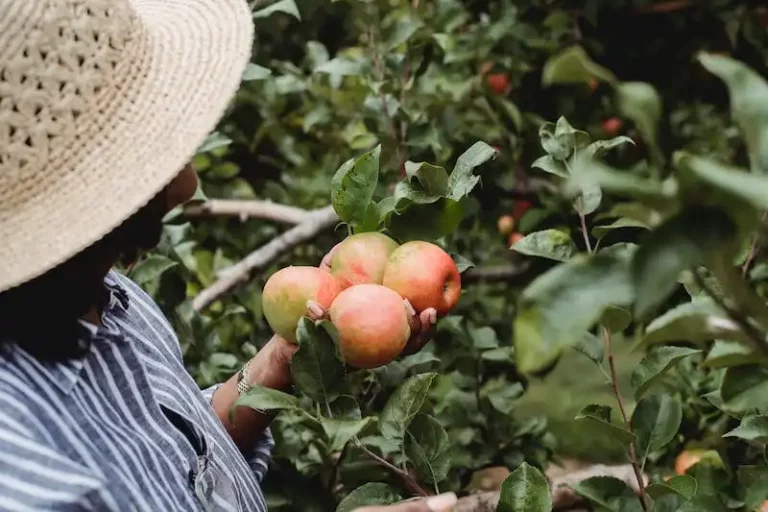If you want your roses to survive and bloom beautifully, pruning is a must. Pruning helps ensure that your roses grow healthy and strong, producing more blooms and keeping diseases at bay. But when is the right time to prune your roses?
Hybrid teas, floribunda, and grandiflora roses are the most common types of roses you will find in gardens. These roses need to be pruned each year to remove dead or diseased wood and to shape the plant. The best time to prune them is in late winter or early spring, before they start to sprout new growth.
In warmer climates, you can start pruning your roses in January or February, while in colder areas, it’s best to wait until later in the winter or early spring. The main reason for pruning during this time is that it stimulates the plants to produce new growth, ensuring healthy and abundant blooms later in the season.
When pruning hybrid teas and floribunda roses, you should follow a few simple rules. First, remove any dead or diseased wood, cutting it back to healthy tissue. Next, cut back the main stems by one-third to one-half their size. When it comes to pruning climbers—these roses have long canes that can be trained to grow up walls or fences—you may need to be more specific in the cuts you make.
Finally, it’s important to remember that not all roses need the same type of pruning. Some varieties, such as shrub roses or climbing roses, require less pruning because they naturally grow in a more wild and free form. For these types of roses, you can lightly prune or simply deadhead them to encourage new growth and additional blooms.
In conclusion, pruning is an essential task for rose care. By understanding when and how to prune your roses, you can ensure that they thrive and produce beautiful flowers year after year. So grab your pruning tools, follow the guidelines for your specific rose type, and get ready to enjoy a stunning display of blooms in your garden!
How To Prune Trim Roses: A Step-By-Step Guide
Pruning and trimming roses is an essential task that takes place at specific times throughout the year. Knowing when and how to prune your rose bushes will ensure their optimal growth and abundant blooms. Here is a step-by-step guide to help you keep your roses healthy and beautiful:
- Know when to prune: The best time to prune roses is typically in late winter or early spring, when the bushes are still dormant. This allows for new growth to emerge as soon as the weather warms up.
- Prepare the tools: Before you start pruning, make sure you have all the necessary tools, such as sharp pruning shears or secateurs, gloves, and protective eyewear. This will help you trim the roses effectively and protect yourself from thorns and debris.
- Assess the rose bushes: Take a close look at your rose bushes and identify any dead or diseased canes. Cut these canes back to the ground, as they can attract pests and diseases and hinder the healthy growth of the plant.
- Trim for shape and size: Remove any weak or crossing branches that may be crowding the center of the bush. Cut them back to a healthy outward-facing bud or junction with a main stem.
- Cut back to promote new growth: Trim the remaining canes back by about one-third to one-half of their length. Make clean cuts above an outward-facing bud to encourage new growth in the desired direction.
- Remove old blooms: Deadhead your roses by cutting off faded flowers just above a healthy bud. This practice stimulates continuous blooming throughout the summer.
- Clear the area: After pruning, remove any fallen leaves, debris, or dead foliage from around the base of the rose bushes. This will help prevent the spread of diseases and pests.
- Apply fertilizer and spray: If needed, apply a balanced rose fertilizer and spray with a dormant oil spray to control overwintering bugs and diseases. Follow the product instructions carefully.
- Protect from frost: If there is a risk of frost after pruning, cover the roses with burlap or another protective material. This will shield them from extreme temperatures and keep them safe.
Remember that the specific pruning times and techniques can vary depending on your rose varieties and climate. Some perpetual roses may require pruning throughout the summer, while others may only need trimming once a year. Always prioritize the health and care of your roses to ensure they thrive and enhance the beauty of your property.
Do Roses Need To Be Pruned
Roses are a popular addition to any garden. Whether you have climbing roses, hybrid teas, or other varieties, it’s important to know when and how to prune them to keep them healthy and beautiful.
Pruning roses is not absolutely necessary, but it is highly recommended. Pruning helps roses to grow and bloom better, and also keeps them from becoming overgrown and unkempt. Regular pruning also helps to remove any dead or diseased wood, preventing further damage to the plant.
The best time to prune roses is in the late winter or early spring, before they start to grow new shoots. This is typically around February or March, depending on your climate. By pruning at this time, you’ll stimulate new growth and ensure that your roses look their best when they start to bloom in the summer.
When pruning roses, it’s important to use sharp and clean tools to make clean cuts. Start by removing any dead, damaged, or diseased canes. For hybrid tea roses, you can prune them down to about 4-6 inches from the ground. For climbing roses, trim back any long, unruly canes and tie them to a support structure. For shrub roses, you can trim them lightly to maintain their shape.
After making cuts, it’s a good idea to seal the open wounds with a pruning sealant or wound dressing to prevent diseases from entering the plant. This can be done with a dab of white glue or a specialized tree wound dressing available at garden centers.
Once you’ve finished pruning, clean up any fallen leaves or debris around the base of the roses. This will help to prevent the spread of diseases and keep the area looking tidy.
Remember to always follow the specific pruning instructions for the type of rose you have. Some roses, like once-blooming or antique roses, should only be lightly pruned, while others, like hybrid teas and climbers, benefit from more extensive trimming.
In summary, pruning roses is a key part of their care and maintenance. While it’s not absolutely necessary, it can greatly improve the health and appearance of your roses. By pruning at the right time and following proper techniques, you’ll ensure that your roses bloom beautifully year after year.
Why You Should Prune Roses
Pruning roses is an important task that should be done regularly to keep your rose bushes healthy and encourage optimal growth and blooming. There are several reasons why you should prune your roses:
- Promotes New Growth: Thinning out old or dead wood from the rose bush allows for new growth to occur. This helps maintain the overall health and vigor of the plant.
- Improves Air Circulation: Pruning opens up the center of the rose bush, allowing for better air circulation. This helps prevent fungal diseases and improves the overall health of the plant.
- Controls Size and Shape: Regular pruning helps control the size and shape of the rose bush. This is especially important for smaller gardens or when you want to maintain a specific look.
- Removes Dead or Diseased Wood: Pruning allows you to remove any dead or diseased wood, which helps prevent the spread of disease and promotes the growth of healthy new wood.
- Encourages Repeat Blooming: Deadheading, which is the removal of spent flowers, encourages your roses to produce more blooms. Regular pruning can also help stimulate the growth of new flowering branches.
- Prevents Cross-Branching and Tangling: Pruning can help avoid the problem of branches crossing and tangling with each other. This makes it easier to care for and maintain the rose bush.
Pruning roses should be done at the right time, according to the type of rose you have. A step-by-step guide on how to properly prune roses can help you know when and how to trim your roses.
Overall, pruning roses is a necessary and beneficial task that should be done on a regular basis. By following a proper pruning guide and knowing the specific needs of your rose bushes, you can ensure healthy growth, abundant blooms, and beautiful roses for years to come.
Note: If you’re ever unsure about when or how to prune your roses, consult a local expert or refer to a trusted pruning guide. There’s no harm in asking for help!
When To Prune Roses
Roses come in many different varieties, each with its unique needs for pruning. Although there are some general guidelines to follow, such as leaving the winter pruning for roses that can withstand the cold, it is important to understand the specific requirements of each type of rose.
In general, winter is the best time to prune roses. This is because during this period, the rose plants are dormant, and pruning helps them prepare for the upcoming growing season. Winter pruning involves removing any dead or damaged stems, cleaning and reducing the size of the rose bush. It is also the perfect time to thin out the rose plant to promote better air circulation and reduce the risk of diseases.
When pruning roses, it is important not to force them into dormancy too early. If major cuts are made in the fall, the rose bush may not have enough time to recover, leading to potential damage during the winter. Woody stems, even if they have stopped blooming, will help protect the rose bush from winter frost.
Deadheading, which is the removal of wilted flowers, can be done throughout the growing season. This encourages the rose bush to produce more blooms. Additionally, covering the rose bush during long periods of frost can provide some protection.
The easiest way to know when to prune roses is to look for signs of dormancy. Once the rose plant has gone into dormancy, it is safe to start pruning. This usually happens in late winter or early spring. However, the timing may vary based on the specific rose variety and the climate.
The basic steps of pruning roses involve evaluating the structure of the plant, removing any dead or damaged branches, and training the rose bush into the desired shape. For once-blooming roses, pruning should be done after the flowers have faded. Climbing roses, on the other hand, may require minimal pruning in order to maintain their natural form.
It is important to use the proper tools when pruning roses to avoid any damage. My recommendations include using clean and sharp pruning shears, bypass pruners, and loppers for thicker branches. Having the wrong tools or not using them correctly can lead to damage that may hinder the growth and blooming of the roses.
In summertime, roses in warmer climates may benefit from a light pruning to help them cope with the heat. This can involve removing a couple of the oldest canes to stimulate new growth and improve the overall health of the plant.
In conclusion, knowing when to prune roses is essential for optimal growth and bloom. By following some basic guidelines and evaluating the specific needs of each rose variety, you can ensure your roses stay healthy and beautiful throughout the year.




